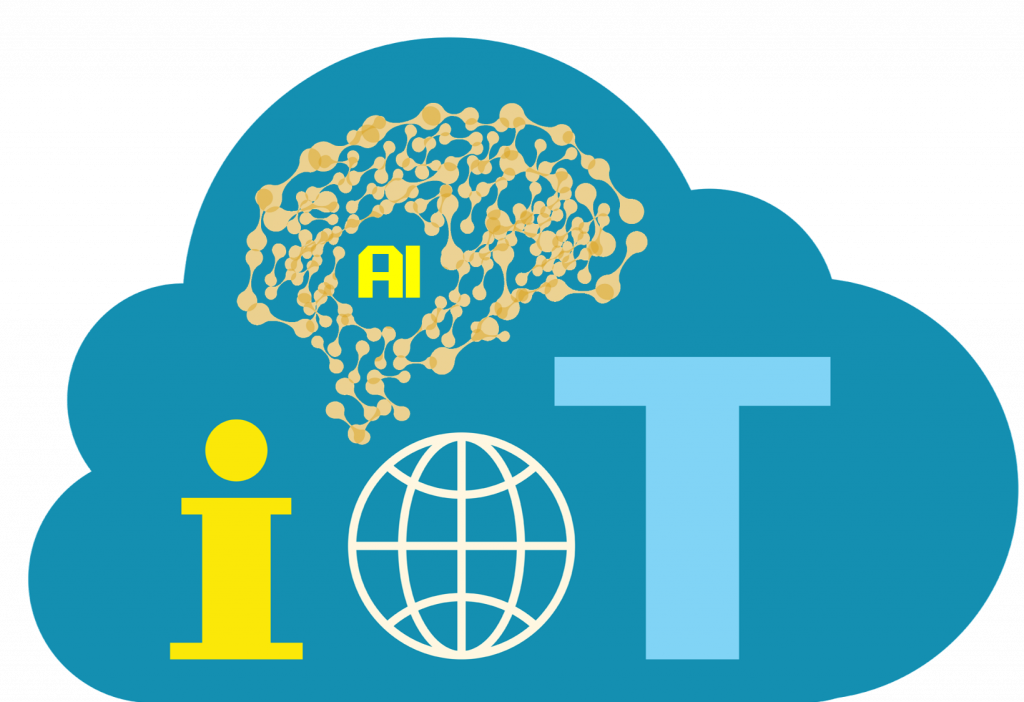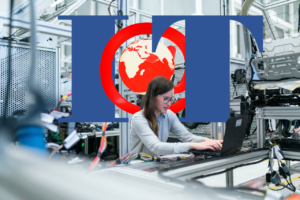There is a lot of discussion about the future benefits of the Internet of Things (IoT) — sometimes called the Industrial Internet of Things (IIoT). As more and more devices connect to the Internet, the amount of data being generated will explode. Some experts worry that businesses will drown in data. Making oceans of IoT-generated data useful for people, governments, and businesses requires the capabilities of cognitive technologies. “The Internet of Things is a technology helping us to reimagine daily life,” writes Anupa (Iman) Ghosh, “but artificial intelligence (AI) is the real driving force behind the IoT’s full potential. From its most basic applications of tracking our fitness levels, to its wide-reaching potential across industries and urban planning, the growing partnership between AI and the IoT means that a smarter future could occur sooner than we think.”[1] Ghosh believes the marriage of AI and IoT could give some companies superpowers. She explains, “IoT devices use the internet to communicate, collect, and exchange information about our online activities. Every day, they generate 1 billion GB of data. By 2025, there’s projected to be 42 billion IoT-connected devices globally. It’s only natural that as these device numbers grow, the swaths of data will too. That’s where AI steps in — lending its learning capabilities to the connectivity of the IoT.” She goes to note, “The IoT is empowered by three key emerging technologies.” They are:
1. Artificial Intelligence. “Programmable functions and systems that enable devices to learn, reason, and process information like humans.”
2. 5G Networks. “Fifth generation mobile networks with high-speed, near-zero lag for real time data processing.”
3. Big Data. “Enormous volumes of data processed from numerous internet-connected sources.”
She concludes, “Together, these interconnected devices are transforming the way we interact with our devices at home and at work, creating the AIoT (‘Artificial Intelligence of Things’) in the process.”
Cognitive technologies and IoT
Przemek Lopaciuk (@PrzemekLopaciuk), Director of Technology, Media & Telecommunications at intive, writes, “Artificial intelligence and the Internet of things (AIoT) is one of the newest players on the tech scene, and it’s already garnered attention at a rapid pace. That’s thanks to its compelling combination of intelligent cognition, edge computing, and autonomous capabilities. While IoT on its own is no doubt powerful, connected networks can only take things so far even when performing at peak. When AI is brought into the same picture, things get a serious upgrade.”[2] According to Ghosh, “There are four major segments in which the AIoT is making an impact: wearables, smart home, smart city, and smart industry.” She discusses each of those segments below:
1. Wearables. “Wearable devices such as smartwatches continuously monitor and track user preferences and habits. Not only has this led to impactful applications in the healthtech sector, it also works well for sports and fitness. According to leading tech research firm Gartner, the global wearable device market is estimated to see more than $87 billion in revenue by 2023.”
2. Smart Home. “Houses that respond to your every request are no longer restricted to science fiction. Smart homes are able to leverage appliances, lighting, electronic devices and more, learning a homeowner’s habits and developing automated ‘support.’ This seamless access also brings about additional perks of improved energy efficiency. As a result, the smart home market could see a compound annual growth rate (CAGR) of 25% between 2020-2025, to reach $246 billion.”
3. Smart City. “As more and more people flock from rural to urban areas, cities are evolving into safer, more convenient places to live. Smart city innovations are keeping pace, with investments going towards improving public safety, transport, and energy efficiency. The practical applications of AI in traffic control are already becoming clear.”
4. Smart Industry. “Last but not least, industries from manufacturing to mining rely on digital transformation to become more efficient and reduce human error. From real-time data analytics to supply-chain sensors, smart devices help prevent costly errors in industry. In fact, Gartner also estimates that over 80% of enterprise IoT projects will incorporate AI by 2022.”
Journalist Smriti Srivastava observes, “The need for Cognitive Computing in the IoT emerges from the significance of information in present-day business.”[3] Information is drawn from data. The staff at Diffen notes, “Data are simply facts or figures — bits of information, but not information itself. When data are processed, interpreted, organized, structured or presented so as to make them meaningful or useful, they are called information. Information provides context for data.”[4] Cognitive technologies can help provide that context. Srivastava explains, “The real value from internet of things devices [comes] from backing up data connections with cognitive computing systems. This turns a connected device from something that strictly generates data into something much more interactive.”
AIoT and Industry 4.0
Concerning the Smart Industry segment, sometimes referred to as Industry 4.0, Lopaciuk writes, “Imagine if your IoT-powered infrastructure could run with the ability to self-repair. Think, not only self-repair, but having the ability to apply predictive maintenance, and adjust to external variables automatically. AI promises to offer these gains due to its ability to analyze the vast amounts of real-time data gathered by IoT devices and make autonomous, intelligent decisions based on this data. AIoT holds the potential to drive productivity and efficiency for any enterprise that employs IoT technology. AIoT is also expected to be particularly transformative for manufacturing, autonomous vehicles and robotics.” Srivastava adds, “Today, the world is all about industry 4.0 and the technologies brought in by it. From Artificial Intelligence to Big Data Analytics, all technologies are transforming one or the other industries in some ways. AI-powered Cognitive Computing is one such technology that provides high scale automation with ubiquitous connectivity. More so, it is redefining how IoT technology operates.”
Ricky Philip, an industry expert working at ThinkPalm Technologies, writes, “Beyond the traditional IoT implementations, cognitive computing is expanding the significance of data to enhance the learning environment and improve the possibilities of what can be accomplished with edge analytics. These innovative technologies are making sensors proficient in diagnosing, detecting and accommodating to their environment without the demand for human intervention. Another tremendous advantage of cognitive IoT is the capability to connect multiple data streams that can recognize patterns and give considerably more context than would be otherwise available.”[5] He concludes, “IoT services are disrupting the current market in innovative ways that have yet to be fully explored. It’s exciting to see how promptly the Internet of Things is developing with tremendous business adoption which makes us realize what an impact IoT it will have on everyday life.” Ghosh adds, “The AIoT fusion is increasingly becoming more mainstream, as it continues to push the boundaries of data processing and intelligent learning for years to come.”
Footnotes
[1] Anupa (Iman) Ghosh, “AIoT: When Artificial Intelligence Meets the Internet of Things,” Visual Capitalist, 12 August 2020.
[2] Przemek Lopaciuk, “These Three Industries are About to be Hit by AIoT,” readwrite, 7 June 2020.
[3] Smriti Srivastava, “Making IoT Data Meaningful with AI-powered Cognitive Computing,” Analytics Insight,” 1 April 2020.
[4] Staff, “Data vs. Information,” Diffen.
[5] Ricky Philip, “Why 2020 is the Right Year for Businesses to Make an Investment in IoT,” Analytics Insight, 3 August 2020.





